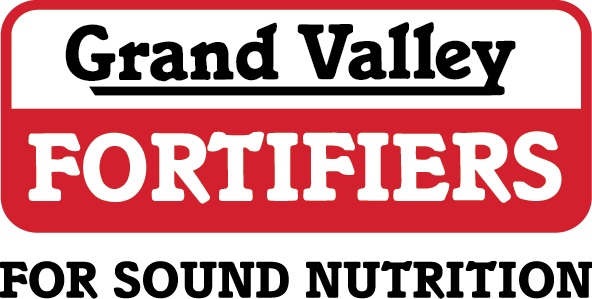Manager of Monogastric Nutrition
Grand Valley Fortifiers
In this article we will cover some best practices of liquid feeding and how to get the most out of your liquid feed system.
System Hygiene
When working with liquid feed, there is a much higher risk of bacterial, yeast and mold contamination relative to dry feed. With this risk, system hygiene becomes very important to ensure fresh and clean feed is delivered at each feeding. While some ingredients have naturally low pH (< 7), this does not necessarily provide the protection needed. To reduce the possibility of contamination, an ingredient should be preserved to a pH of less than 4.5. This ensures maximum protection from bacteria such as E.coli, Strep, and Salmonella, while still creating a beneficial environment for good bacteria like Lactobacillus. However, a low pH on its own is not enough to ensure the correct bacterial profile, you must achieve it with the right products. While inorganic acids are strong and can easily reduce pH, they lack the chemical properties to allow them to kill the bacteria, this is where only an organic acid should be used for preservation. There are many different individual organic acids or blends that can be used for this purpose.
Feed Mixing and Dosing
Creating quality liquid feed is not as simple as adding your liquid and dry ingredients in the tank and dosing them out. Sequencing is very important, as well as mixing times to get maximum feed quality. This will ensure maximum soaking time and proper mixing. Start and end with the largest volume ingredients to insure you allow for proper dosage and that any smaller volume ingredients are pushed into the tank by the larger ones. After all ingredients are added, mix for 5-10 minutes. Longer mixing times increases the risk of increasing oxygen content and provides a favourable environment for aerobic microorganisms. There are different mixing tank designs, but some of the more common ones are as follows: round sided, square sided, closed top, open top. With open and closed top systems, there are factors to consider ensuring high feed quality. On a closed top system, you can prevent contaminants from falling into the tank, but it is more difficult to clean and inspect. An open tank system is easier to clean and inspect, but it allows for much easier feed contamination via foreign objects falling into the tank. This can not only be an issue for feed contamination, but if objects such as pieces of metal, wood or plastic fall in, they can also break downstream equipment. To mitigate this risk, a good stone trap is essential in the feed line after the mixing tank.
Ingredient Storage
When working with dry ingredients, storage is not as difficult compared to liquid products. The benefit of a liquid feeding system outside of its automated capabilities is the ability to use liquid co-products from the human food and biofuel industries. When setting up storage for co-products, there should be a capacity of at least 40 MT per tank. This allows for full truck loads to fit into a tank and have room for agitation and examination. Proper agitation allows for the liquid products to be kept in suspension and ensure a uniform product is being dosed into the liquid mix. Products should be agitated for 5 minutes prior to dosing into the feed mixing tank. To get the best agitation possible, the use of paddles and baffles in the storage tank will allow for mixing throughout the product. Recirculation is a popular method of “agitating” co-products due to its lower cost of implementation, but this simply moves small amounts of product in a circular pattern, and it does not prevent settling out of solids from co products. Having the ability to monitor and preserve co-products is key to proper storage and keeping feed quality at its highest.
Sampling
While following all of the best practices listed above, sampling is still needed to ensure that all feeds and ingredients are not losing feed value or being misused. In an ideal situation, dry matter and pH will be monitored on each delivery. This can be achieved with cost effective, on-farm devices. More complex testing such as protein and mineral analysis should be done via an accredited lab and has a slight lag time associated with it. All results should be reviewed with your nutrition supplier to allow for changes to complimentary products if needed. This is just a subsection of the complexity of liquid feed management. If you are interested in learning more or are considering implementing liquid feeding on your farm, reach out to a Grand Valley Fortifiers Swine Specialist today for a detailed assessment of your installation and the possibilities that exist with liquid feeding.
This article was written for the Spring 2025 Swine Grist. To read the whole Swine Grist, click the button below.

